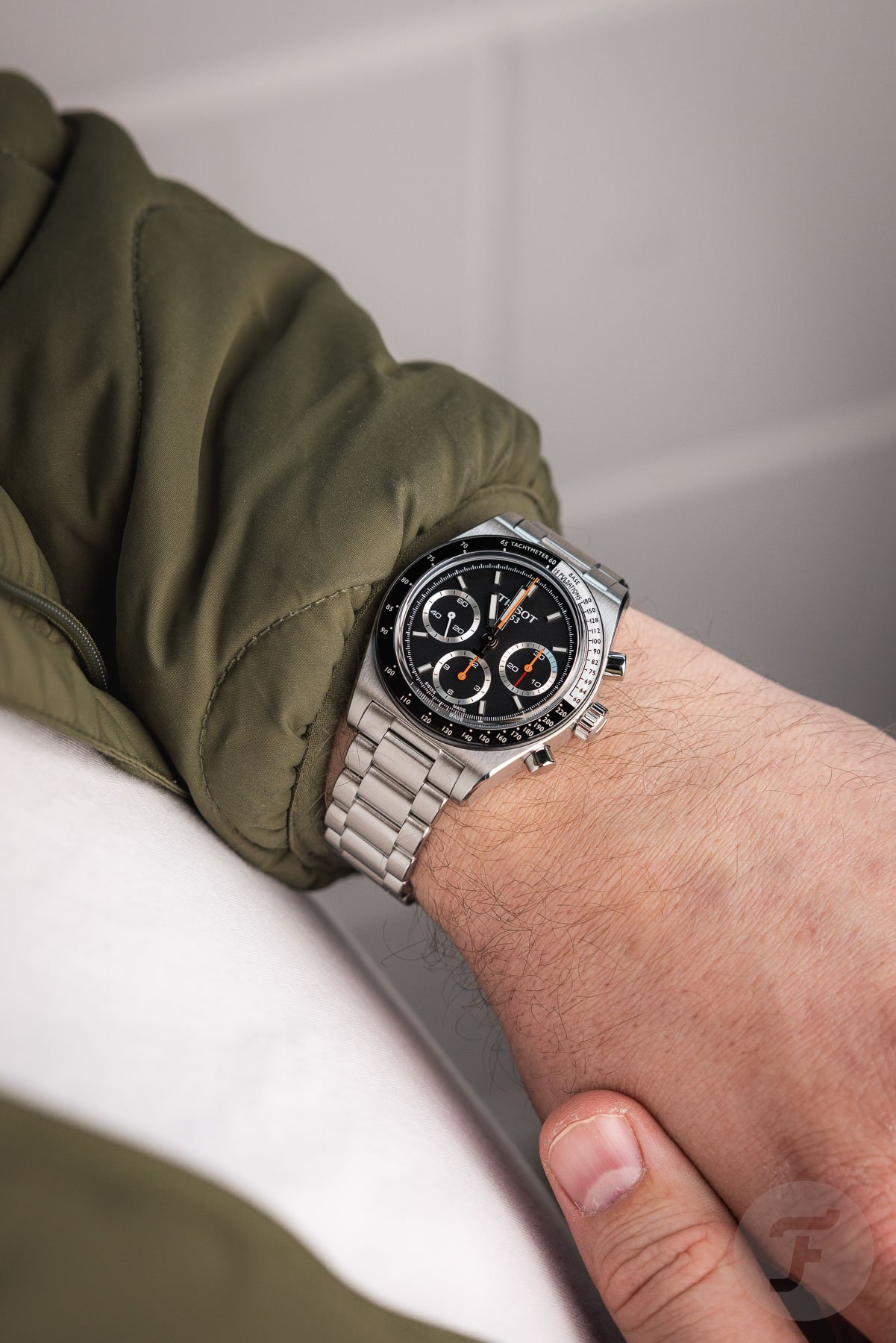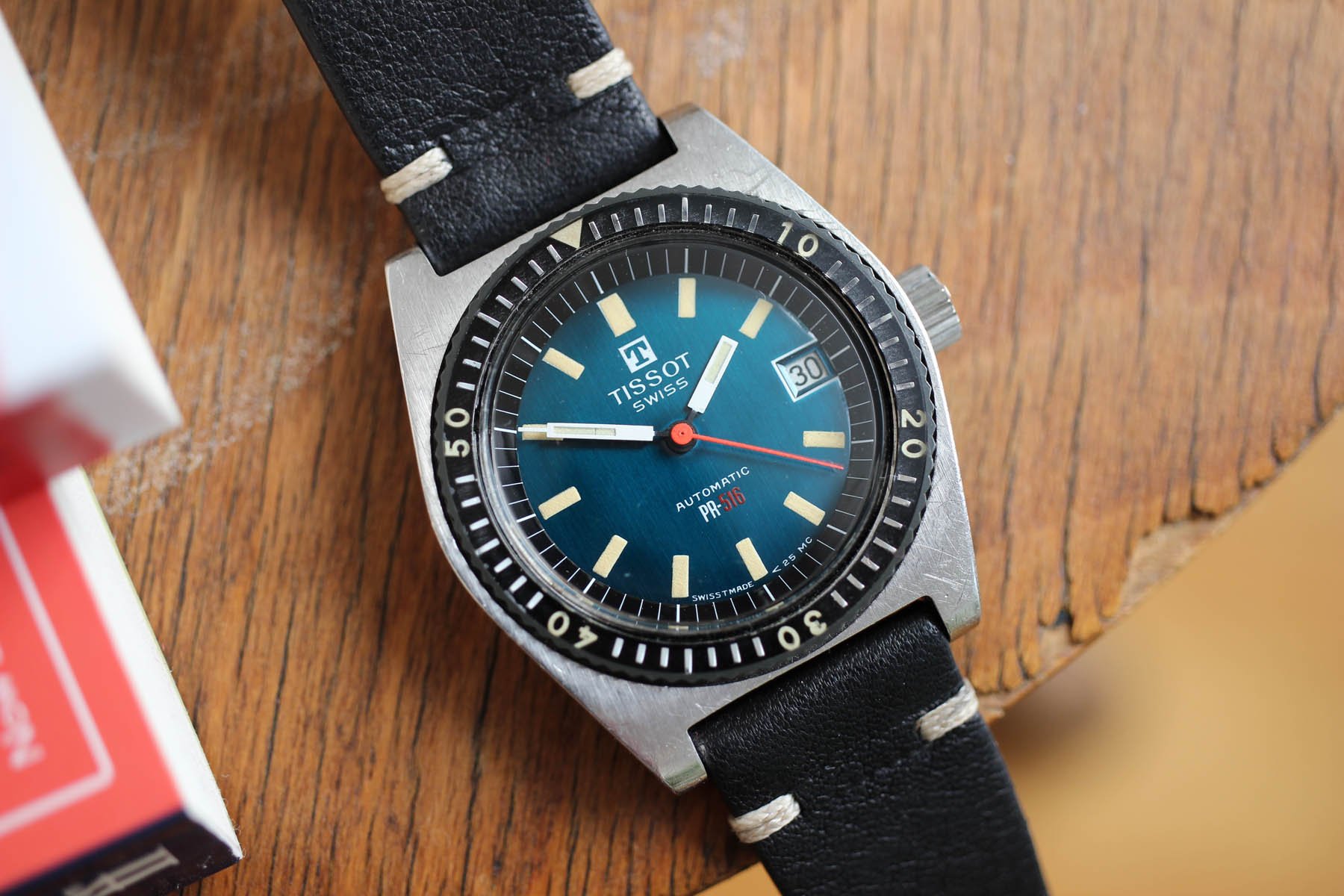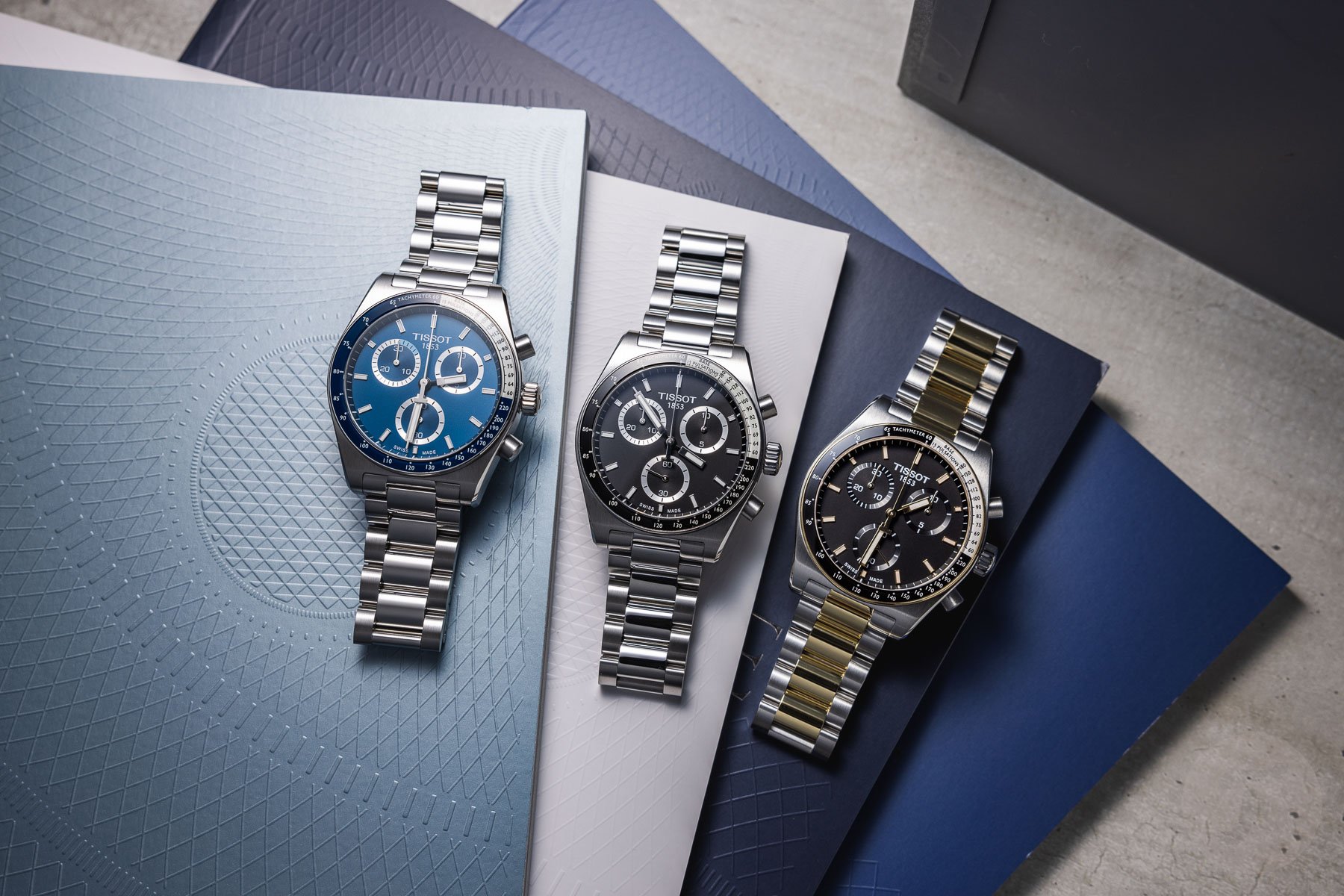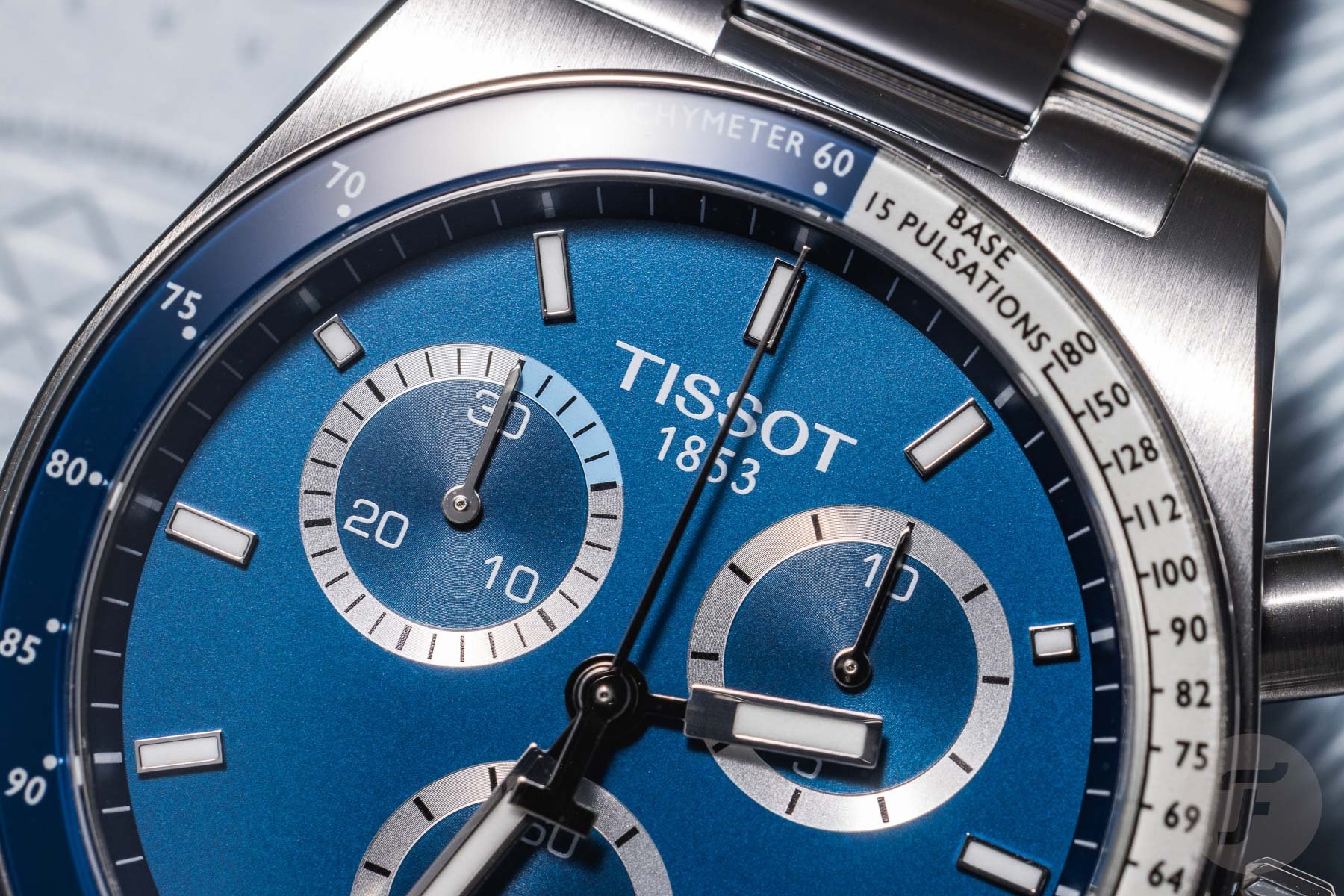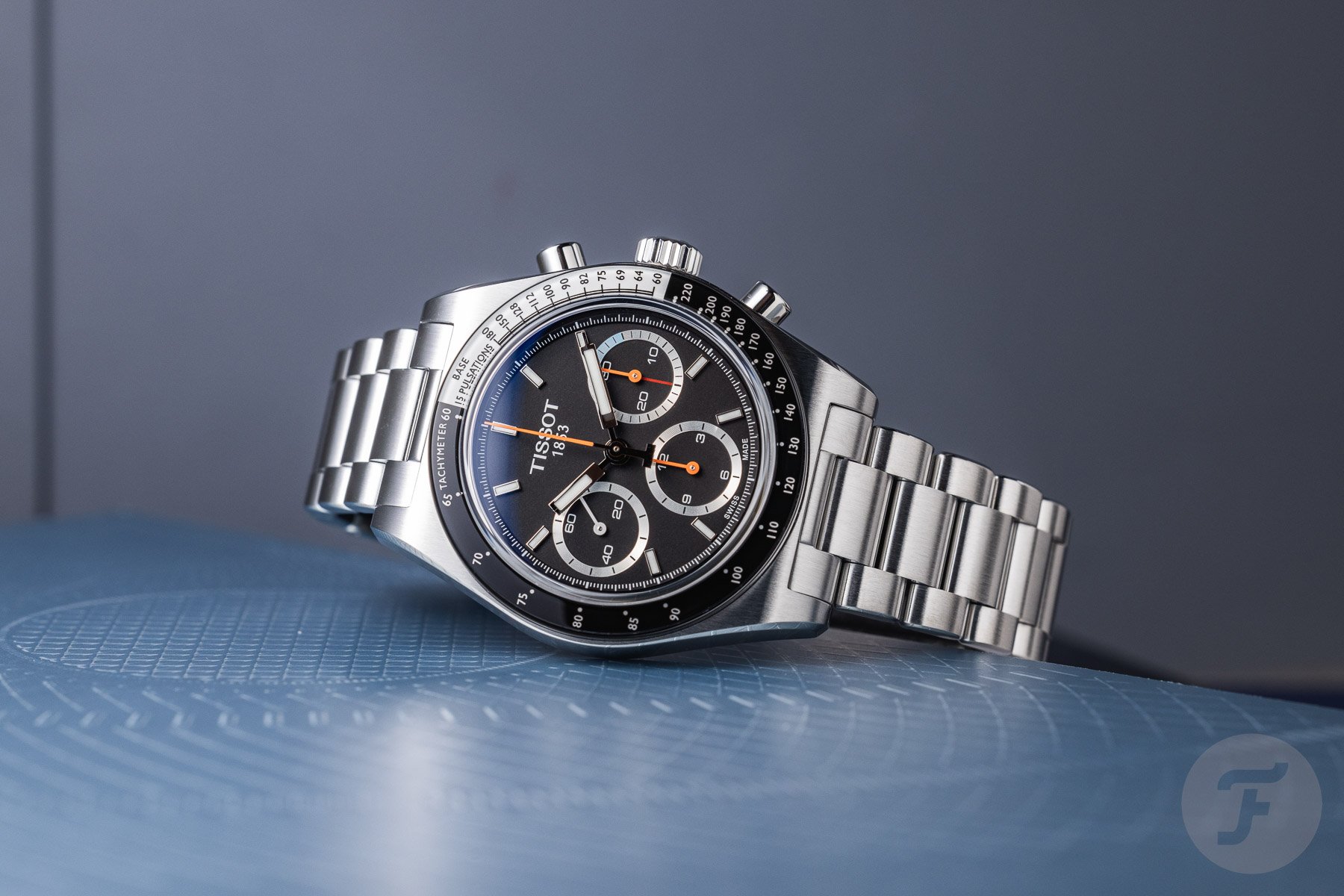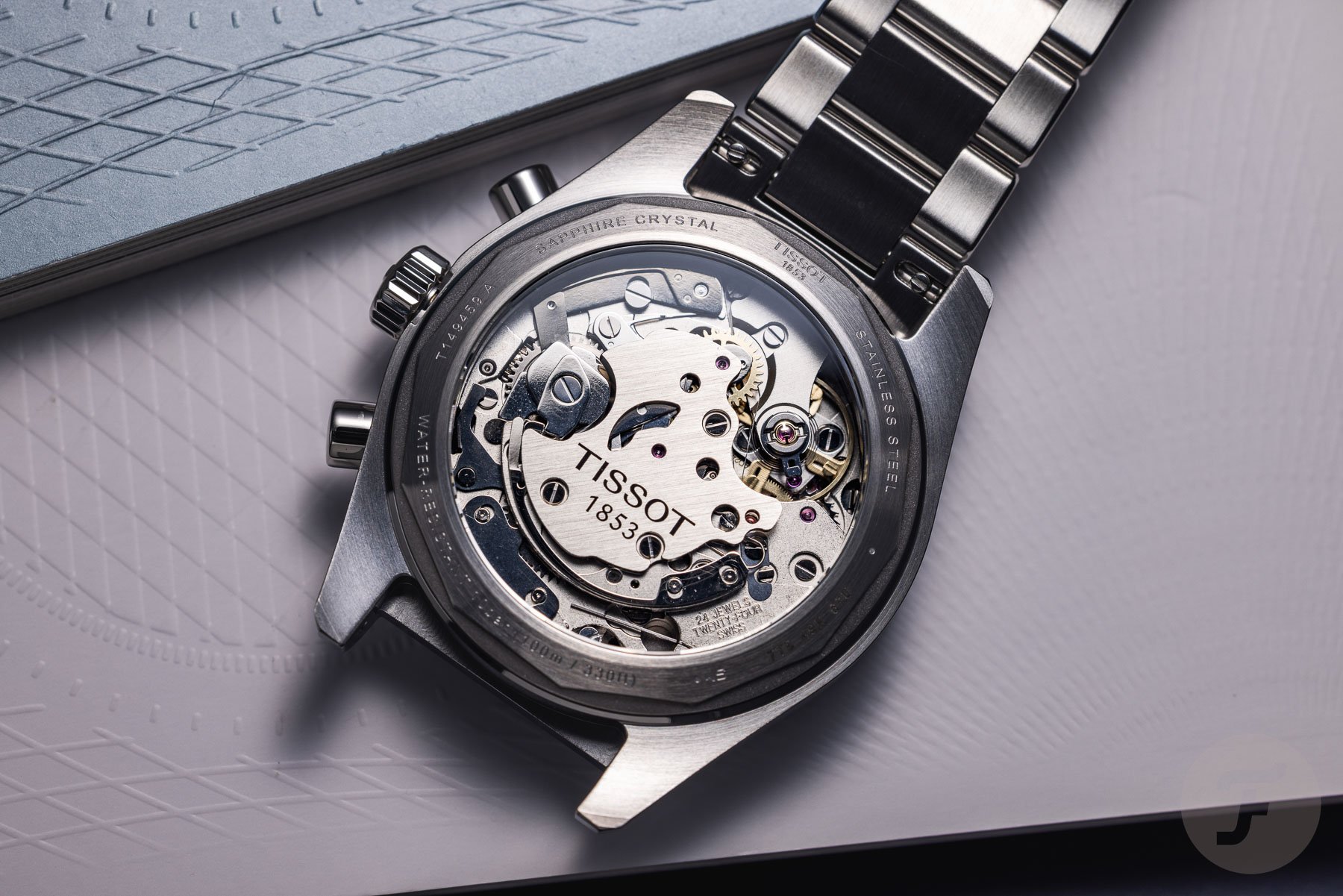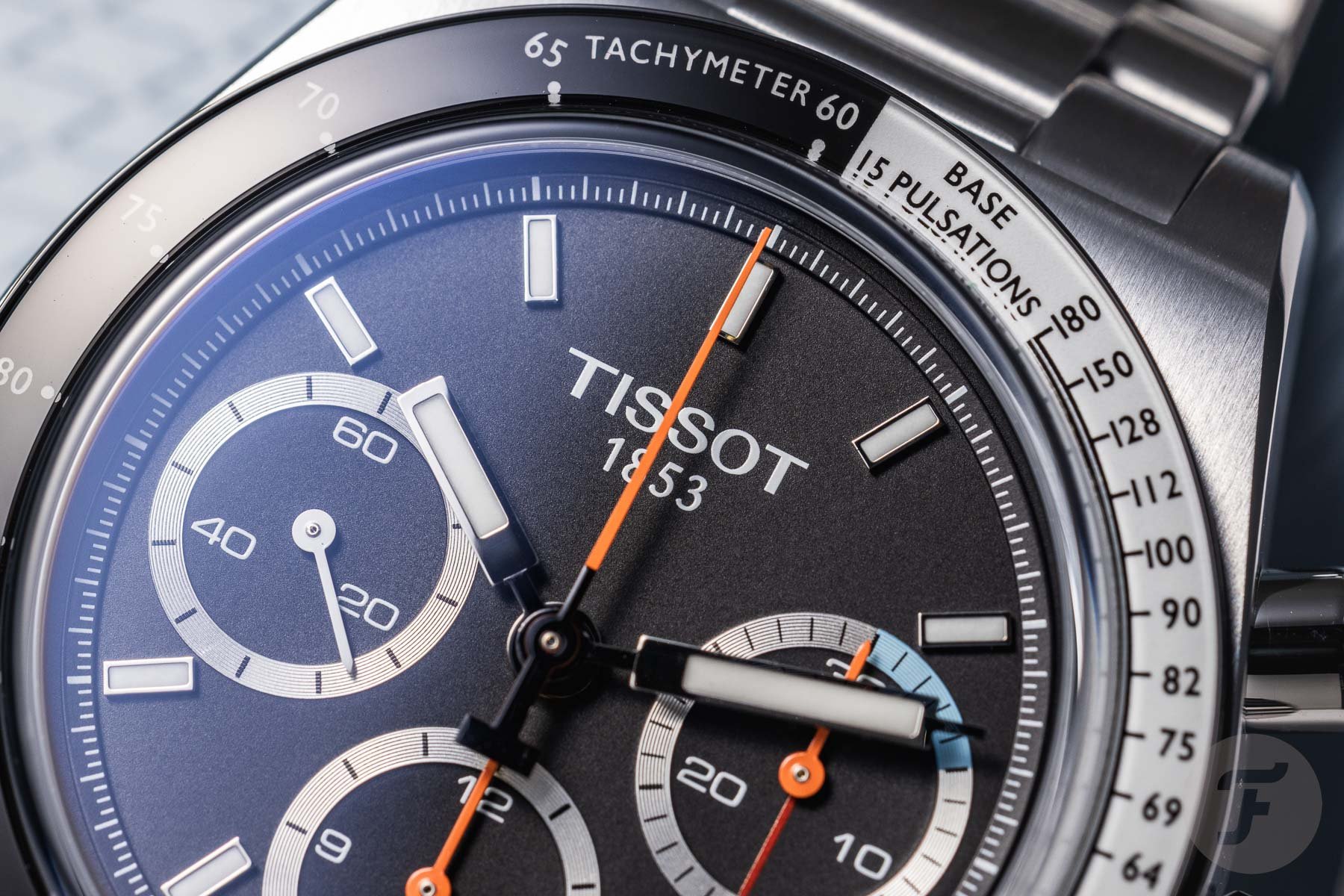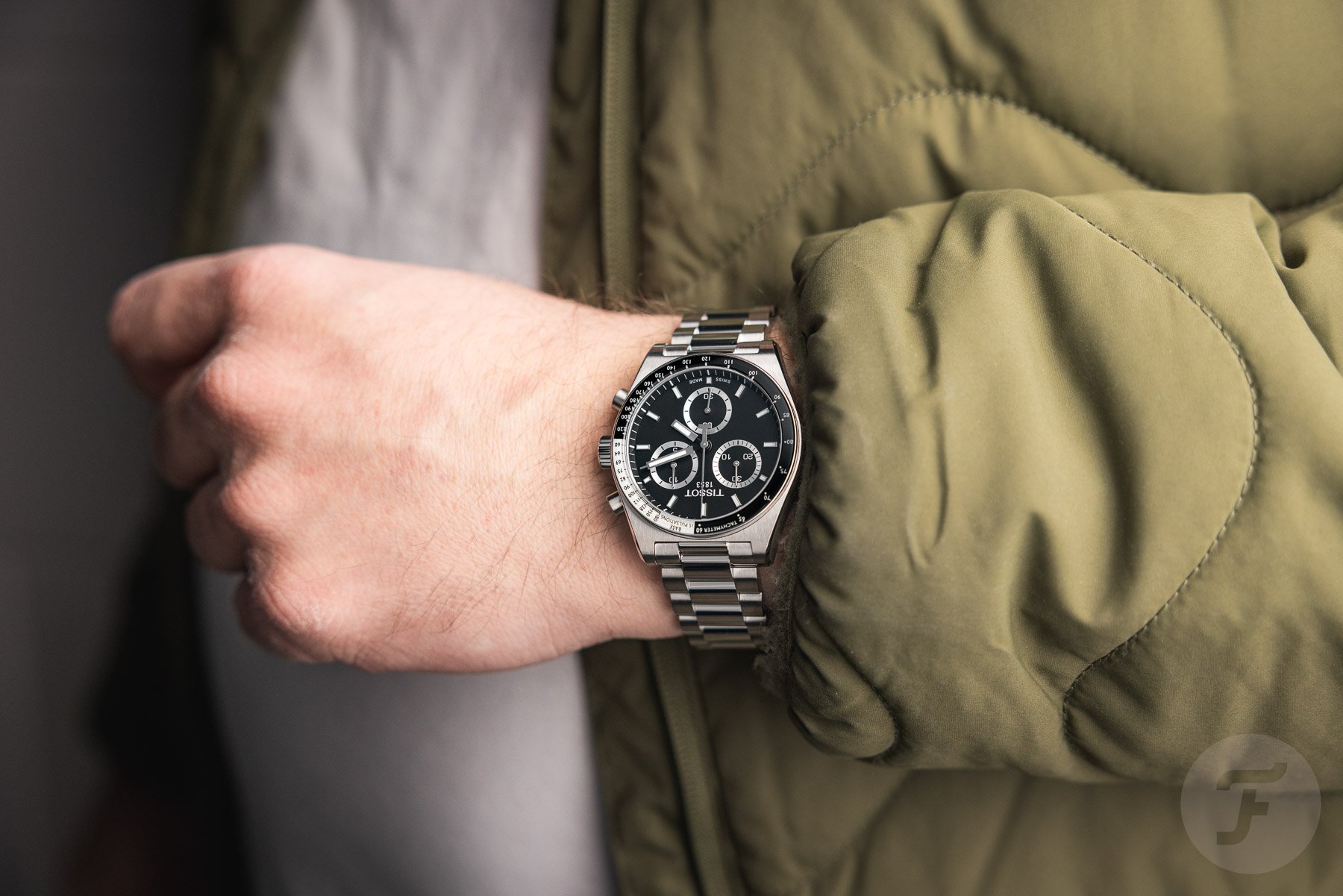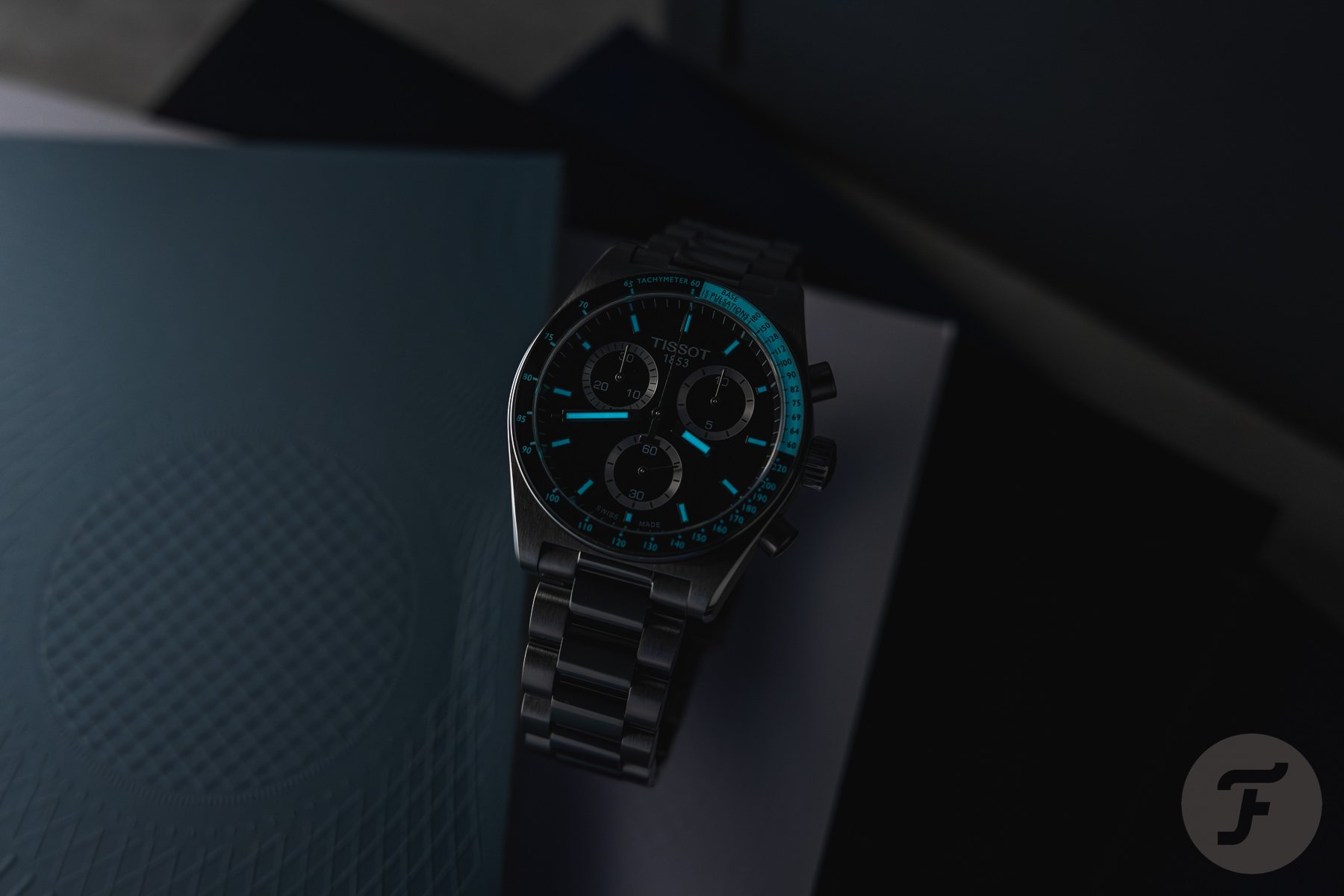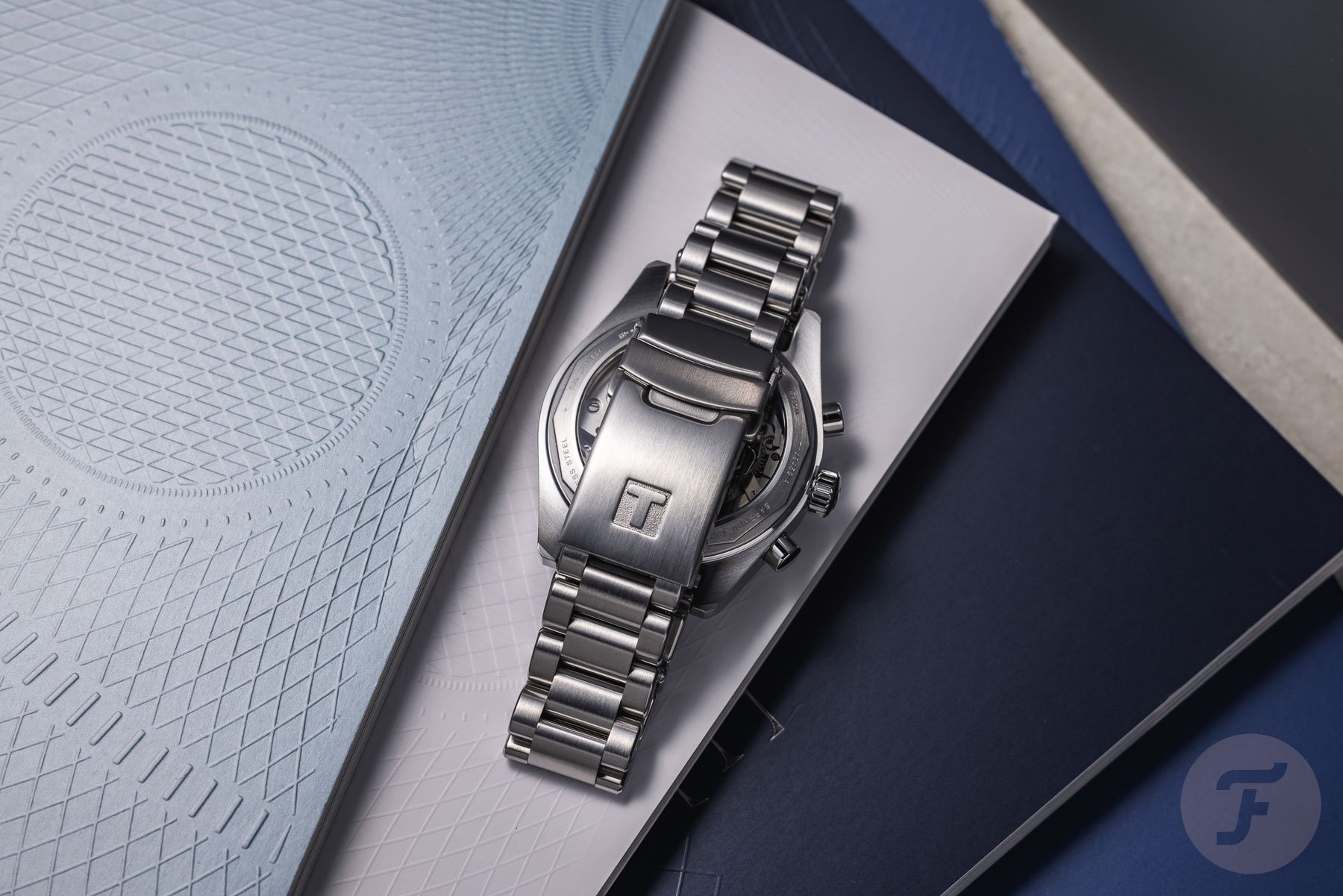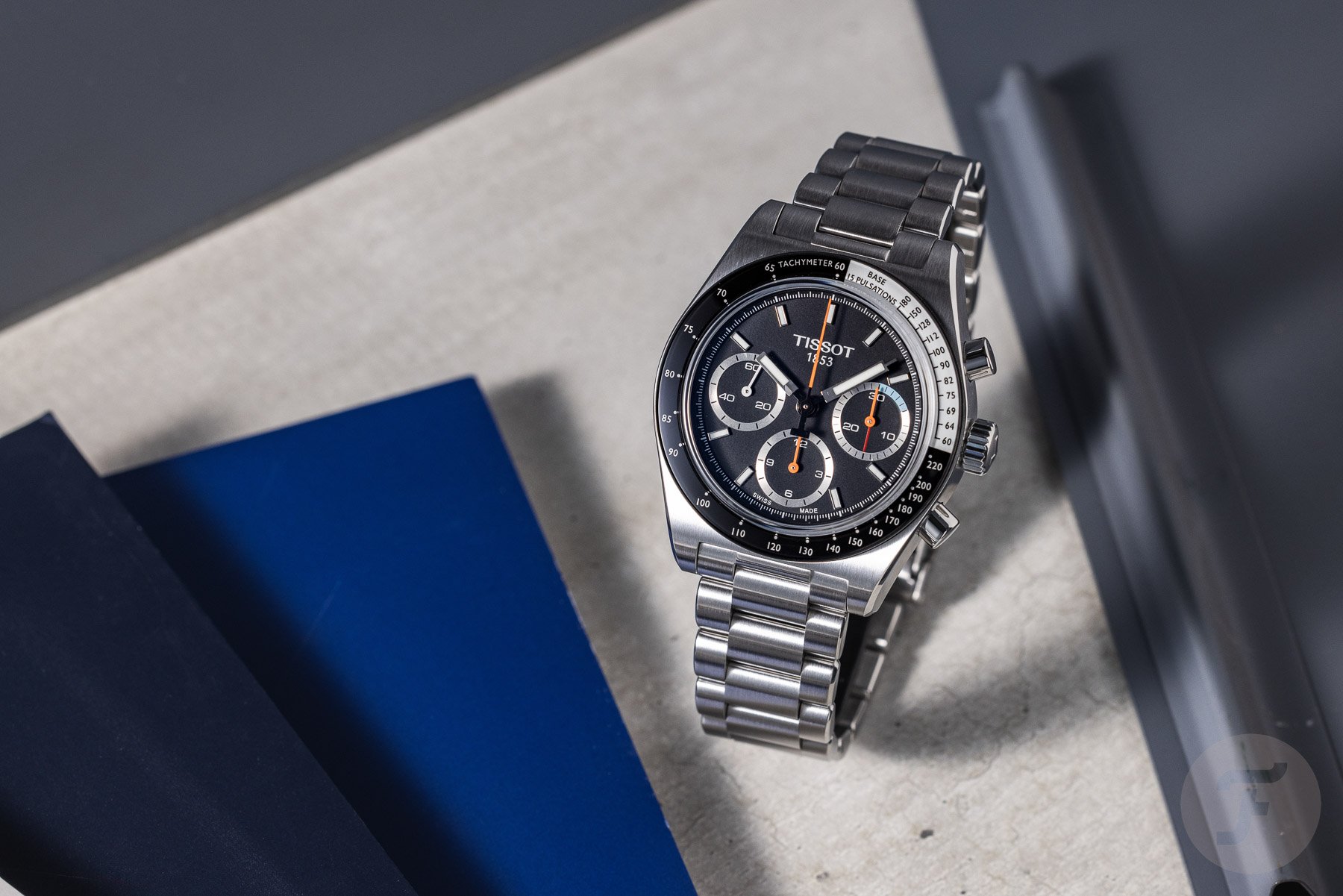Introducing: The Tissot PR516 — A New Collection Of Do-It-All Chronographs
The first Tissot PR 516 was introduced in 1965, and a chronograph version followed three years later. Today, we get four new versions that lean on that aesthetic from the late ’60s and early ’70s. This is the new-for-2024 Tissot PR516 chronograph in three quartz versions and one hand-wound execution. I went hands-on to see what’s what.
The quartz models are priced at €545 for the all-steel versions and €595 for the two-tone version. The mechanical PR516 comes in at €1,975. All models are available from Tissot as of today.
Some Tissot PR516 history
As mentioned above, the PR 516 (with a space in the name) dates back to 1965. The first version was a time-only watch in a style that we would call GADA (Go Anywhere, Do Anything) today. PR stood for “Particularly Resistant,” a delightful bit of ’60s marketing. Originally part of the Seastar line, the 516 was marketed as a water-resistant watch.
In 1968, Tissot introduced a chronograph version of the PR 516. This added complication turned the 516 into more of a sporty racing watch. Although it dates back to the late ’60s, its styling is very much in line with the 1970s aesthetic. Today’s release sees that styling make an undiluted comeback.
The Tissot PR-516 (with a hyphen this time) had a particular moment of glory on the silver screen in 1973. Roger Moore can be seen wearing a version with a date and dive bezel in Live and Let Die. It is believed to be his private watch in an era when James Bond wasn’t claimed by Omega yet.
The quartz Tissot PR516 specs
On to today’s releases. While the mechanical version is very close in looks to the 1968 original, the quartz models are a bit different. For starters, they are more straightforward color-wise, lacking the little touches of orange and pale blue. More prominently, though, they have a different dial layout due to the quartz caliber inside. The sub-dials form an isosceles triangle with the handstack in the middle. It is a common look for quartz chronos with ETA movements, but it can be a bit jarring for people who are used to mechanical chronographs.
The stainless steel case measures 40mm across, 47mm long, and 12.5mm thick, and it bears a 100m water resistance rating. Up top, we find a sapphire crystal. The case back is made of steel and features a decorative etching, mirroring the racing theme of the watch. Additionally, the bezel is partly lumed with Super-LumiNova, as are the hands and indices. The three-row bracelet features polished center links and a quick-release mechanism for easy changing.
Inside ticks the quartz caliber G10.212 Power Drive. This movement measures 29.8mm across and 5.12mm thick, and the 394 battery should last a healthy 38 months.
The mechanical Tissot PR516 specs
The hand-wound version of the Tissot PR516 measures 41mm across, 49mm long, and 14mm thick. This version features a box-style sapphire crystal with AR coating on the inside. The case back features a sapphire crystal too, providing an unobstructed view of the caliber inside.
That caliber is the Valjoux 7753-based A05.291. The self-winding mechanism has been removed and replaced with a brushed bridge. Additionally, the mainspring is fitted with a fixed bridle rather than a sliding one to let you know when you have fully wound it. New barrel architecture boosts the power reserve to 68 hours. There is also a new regulating system, enabling an impressive accuracy of ±5 seconds per day.
As mentioned before, this version more closely resembles the 1968 original. It features the same color accents, although they have taken on slightly more subdued hues of blue and orange. Overall, the hand-wound Tissot PR516 is substantially more refined than the quartz models. Have a close look at the sub-dials, for instance. They are much more textured for a livelier, more detailed look. The bracelet — also of the quick-release variety — is fully brushed here for a more subdued vibe.
Wearing the new PR516 watches
I am delighted to say that the new Tissot PR516 models wear very well. The dimensions are modest for sports chronos, echoing the everyday wearability of the originals. These watches are sporty, no doubt, but they could very well function as your only watch. There is a subdued elegance to them that makes them quite versatile. You see them on Jorg’s 19cm wrist in the images. However, they wear just as well on my 17.5cm wrist, I am happy to report.
That said, I do have to express a strong preference for the hand-wound version. I expect this is the one that enthusiasts will look at, leaving the quartz models to a more mainstream audience. This isn’t a case of quartz snobbery, but the hand-wound version is just a lot nicer. From the sub-dial positioning to the color accents and the finer detailing on the dial, it is just better.
However, this does come at a price (€1,975). You would expect significant refinements when the price is over three times that of the quartz models (€545 for all-steel, €595 for two-tone). However, within the context of today’s watch market, I think the pricing is about right for both the quartz and mechanical versions.
Closing thoughts
Tissot has managed to do its classic reference justice with this new release. The three quartz models will speak to a very broad audience. I think it is clever that the late-’60s vibe is dialed back a bit on these, making them a little more mainstream. Contrastingly, enthusiasts will probably lean towards the more purist hand-wound version with its more authentic styling. The lumed bezels are a nice touch, as are the upgrades to the Valjoux caliber. In summary, these are charming watches that will surely land well with their respective target audiences.
So, no criticisms? Well, of course, there are. The bracelets, while comfortable thanks to their short links, aren’t the most solid on the market. Additionally, the more expensive hand-wound version could do with a nicer clasp. Lastly, converted automatic chronograph calibers don’t tend to be as beautiful as those built as hand-wound chronos from the get-go. The normally open architecture is often covered by a large bridge, as is the case here. However, this applies to many hand-wound chronographs in today’s watch market, so I can hardly fault Tissot for it at this price point.
Regardless of these quibbles, Tissot has succeeded in reviving a classic from its archives. These are racing chronographs that let you measure both speed and your heart rate with the tachymeter/pulsometer bezel. That’s pretty neat for an adrenaline-filled day at the track, right?
What do you think of the new Tissot PR516 models? Let us know in the comments below!
This is a preferred-position post. Learn more.

